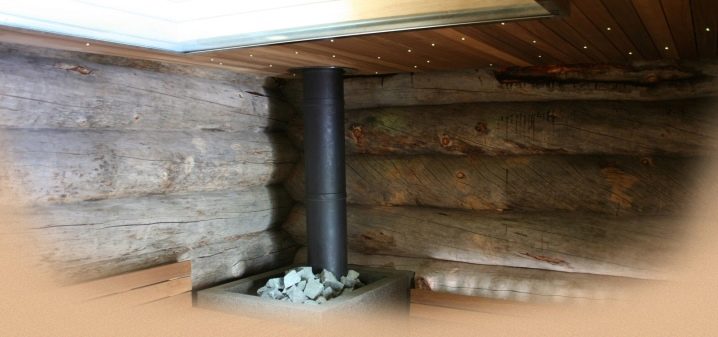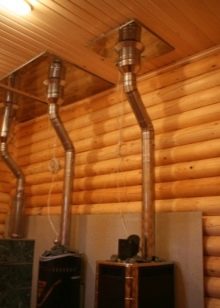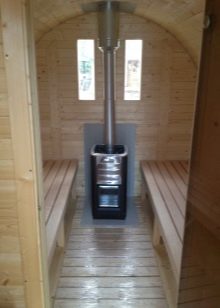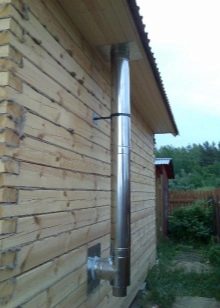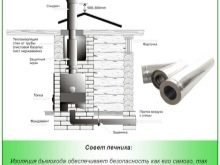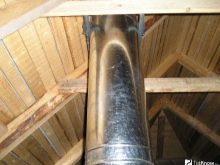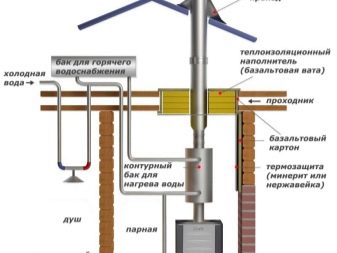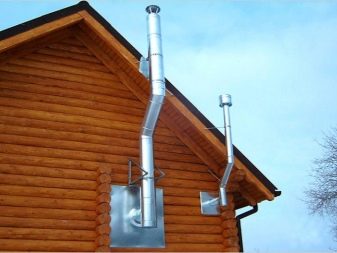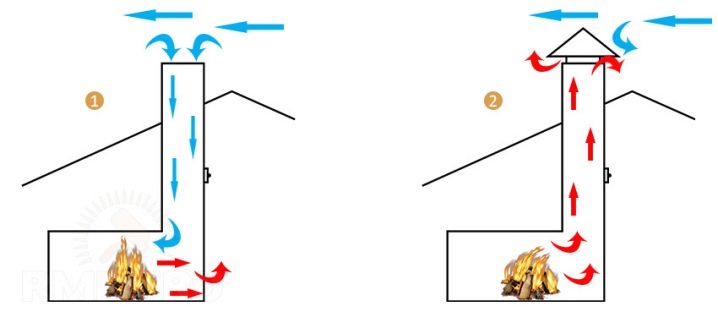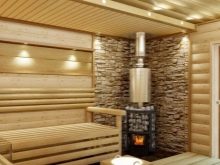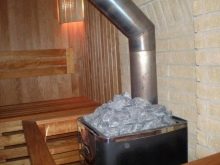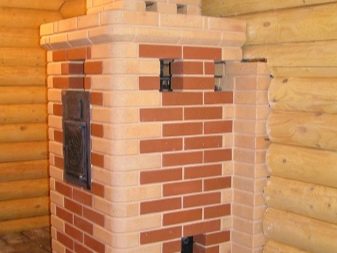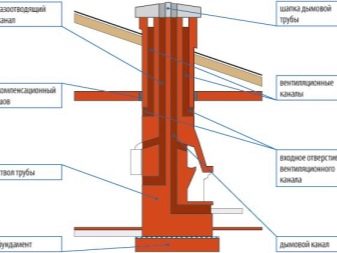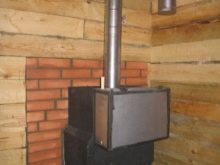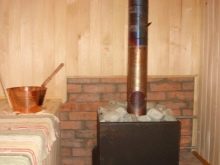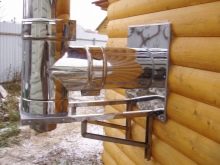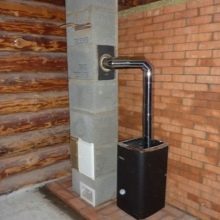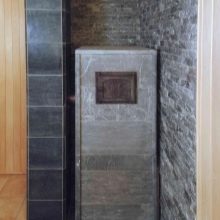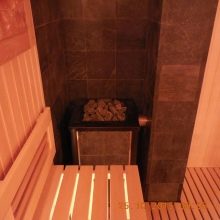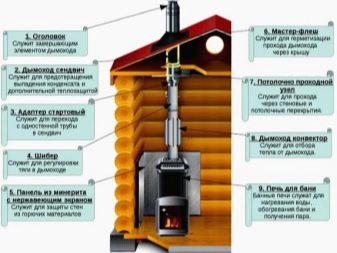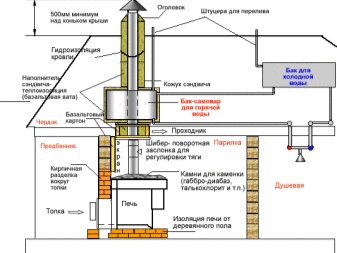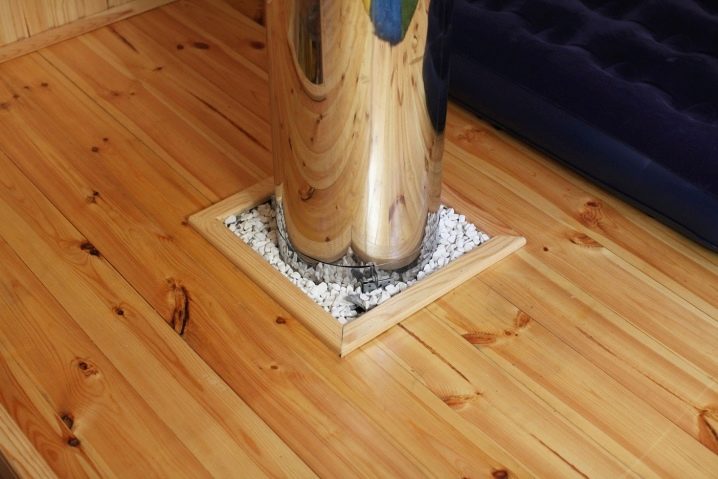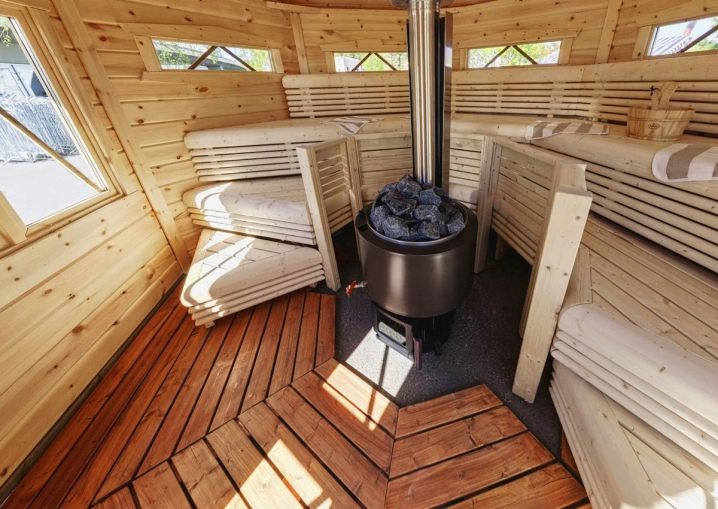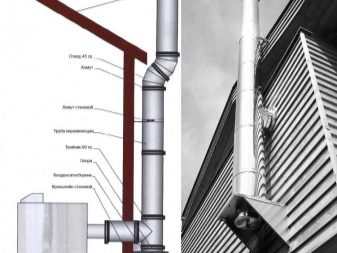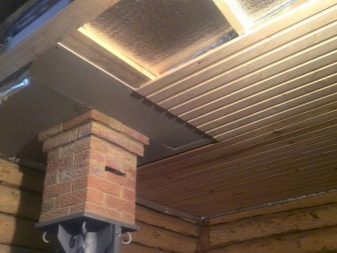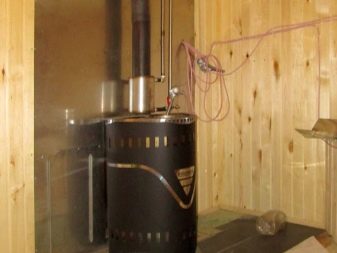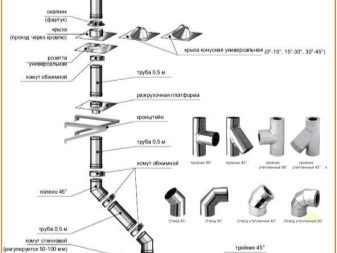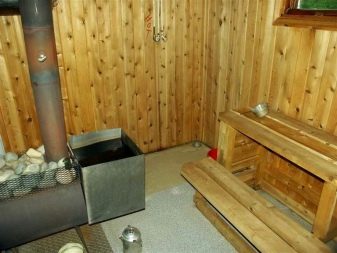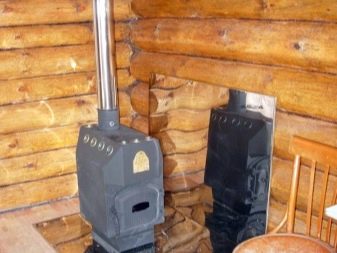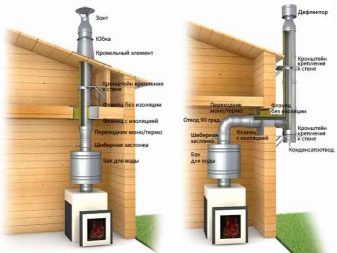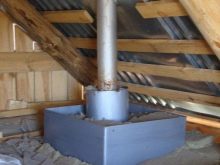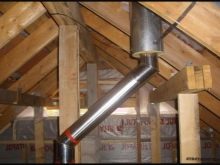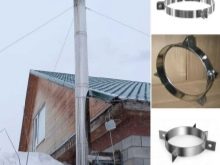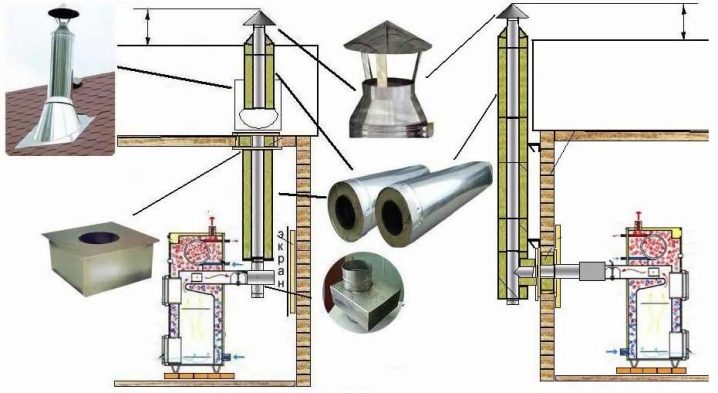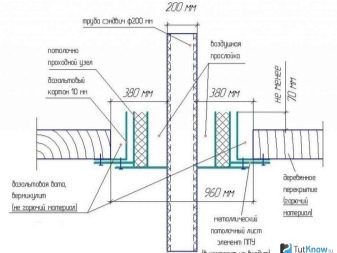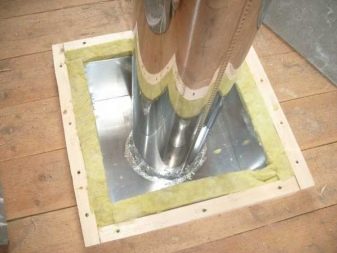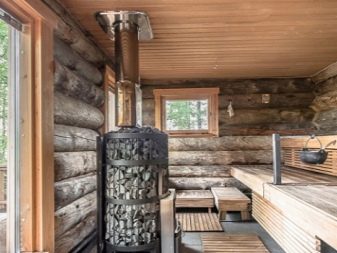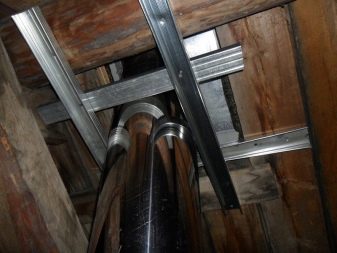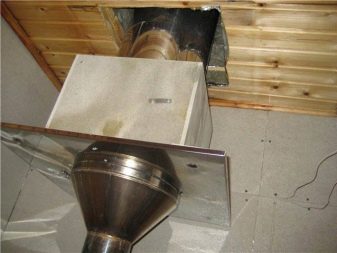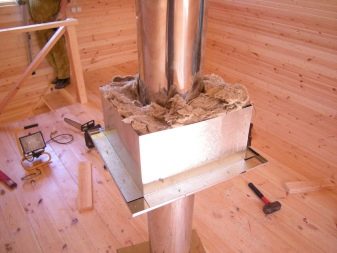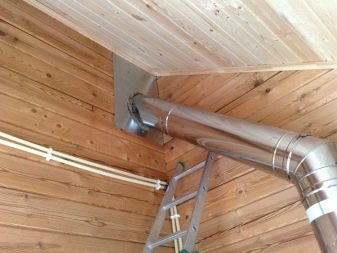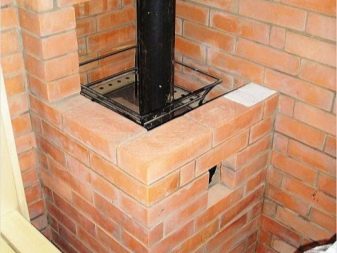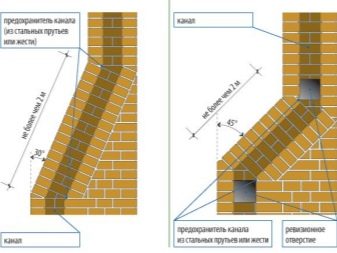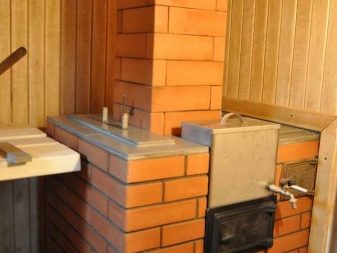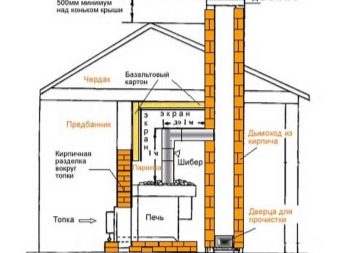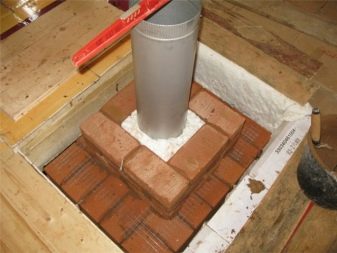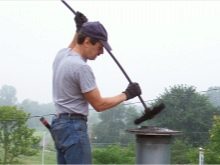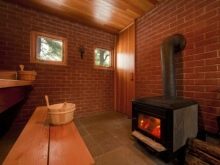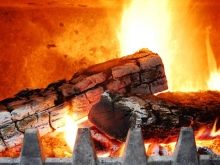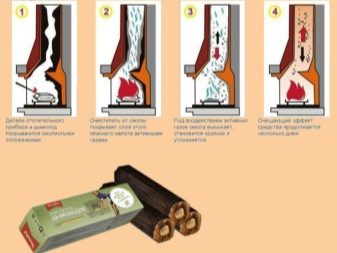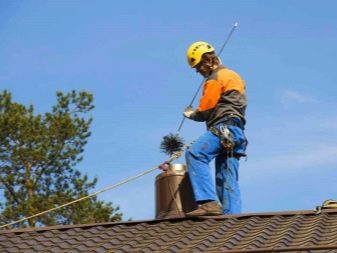Chimney for a bath: device and installation
Proper construction of a pipe for the removal of smoke will improve the quality of operation of the bath. Such a device will smoke in a timely manner, will not allow the furnace to cool too quickly. The correct chimney can be designed with your own hands. Consider the features of the device and its proper installation.
Special features
Work on the arrangement of the chimney can not begin without knowledge of the design features. For example, each manufacturer of bath stove recommends its own diameter and height of the chimney. Technical indicators require maximum compliance with certain requirements. The operation of the device will not be better if the thrust is stronger than the required standards.
With a strong hot gases do not have time to heat the stove, they will evaporate into the pipe. In the event of inadequate intake, little oxygen will be present in the furnace. The room will be filled with smoke, which will lead to uncomfortable finding a person in the bath and the possibility of carbon monoxide poisoning.
Traction - an important indicator for the chimney, which reflects the movement of smoke inside the structure.
The air in the chimney moves upwards. To check the correct direction of motion, use a candle or a lit sheet of paper, which must be brought to the furnace. The fire must be drawn inside. If the chimney is improperly installed, reverse traction often occurs. The main consequence of this phenomenon is an unpleasant smell of smoke and burning inside the premises. Smoke and smoke have a bad effect on people's health, wall coverings, ceiling and room furniture.
The ideal chimney should be strictly horizontal. However, the construction of such a structure is not always possible. If the chimney requires a change of direction, apply the so-called knee. Modern manufacturers offer a huge selection of devices, differing in the ratio of angles and turns. The presence of knees in the chimney make it difficult to clean. Therefore, it is recommended to use this option when it is possible to arrange a horizontal structure.
Another feature of the bath chimney is the ability to install structures inside and outside the building. Each option has its advantages and disadvantages. It is believed that the external chimney is less flammable in comparison with the internal structure. It is easier to install, secure and carry out subsequent cleaning. The main drawback of the external chimney is large heat losses.
If the chimney is internal, the concept of heat loss is automatically excluded. However, the installation of this design is more complicated. In addition, this design is not quite fireproof. There will be fewer shortcomings in the external and internal chimney, if modern materials are used in the work. Features of the used raw materials and elements must comply with the features of the bath. It is necessary to take into account the temperature in the room, sanitary standards, the structure of the bath itself (preferably, the presence of wooden materials).
Kinds
Variants of chimney designs are selected depending on the material used in the construction of the bath. It is permissible to purchase all the elements of the device in finished form or to build it yourself.Until recently, the main material of the chimney was a brick. It differs in ideal characteristics, durability, fire safety.
For the construction of a brick pipe requires special knowledge and skills. This option is not suitable for every bath. Without the lack of practical experience in laying brick pipe, it is almost impossible to build the correct chimney. The brick structure has characteristic rough areas that cause soot deposition in the chimney, which leads to rapid clogging of the structure. In addition, carbon black deposits can cause sparks when the furnace is kindled, which is unsafe.
Modern masters more often choose a stainless steel chimney for a bath stove. The main advantage of such a device is quick installation. In addition, metal chimneys are free from problems that may arise in a brick furnace construction. Stainless steel chimneys are often sandwich structures. It is easy to install a straight iron chimney with your own hands.
The inside of the steel pipe has a smooth surface. Missing edges and roughness contribute to a better removal of smoke from the furnace. But with temperature changes, condensate appears on the steel pipe. With a closed insulation pipe of this phenomenon does not occur. This effect should be remembered when organizing the arrangement of the structure with your own hands.
Another type of chimney for stoves baths - ceramic. This design is resistant to fire, reliability. Modern ceramic pipes are suitable for solid fuel boilers, as well as devices operating on liquid fuel.
The main differences of these designs from other types:
- universal system (the possibility of selecting different diameters);
- ease of processing chimney, even with a side passage;
- water and vapor tightness (availability for stoves with a heater);
- mechanical strength.
Varieties of ceramic, metal models and brick products imply the obligatory presence in the structures of the base, a tank for storing condensate, a tee for cleaning and inspection.
The grounds for any chimney should be perfectly flat and strictly horizontal.
Variants of device designs
Arrangement options require calculations that take into account the amount of incoming air that provides fuel combustion. There are complex and simplified methods of calculation.
For the first calculation, optimal characteristics of the bath chimney are needed:
- gas temperature at the outlet of the pipe +120;
- the minimum speed of movement is about 2 m / s;
- recommended length - 5 meters;
- combustible fuel with one tab in the furnace - 10 kg / h.
To calculate the diameter of the chimney there is a formula: D = √ (2 & 4xVr / 3.14x2)
Here D is the diameter of the pipe, and Vr is the amount of air.
In calculating the height of the chimney may be involved in the geometry of the section. For this calculation make the schedule. The graphical calculation involves the heating area and the pipe area. The first value should be divided by the second and determine the percentage.
With a cross section equal to 10%, the minimum height of the chimney will be:
- 7 m. - with a round pipe;
- 9 m. - with a square pipe;
- 11 m. - with a rectangular tube.
All values are valid for the construction of a direct chimney. In most cases, chimney pipes require rotating structures that reduce the pulling force.To prevent this, when calculating the chimney with curvature, the resulting diameter can be slightly increased. If the sauna stove is purchased, the stage with the calculation of the diameter of the chimney can be completely skipped. All necessary parameters for chimneys are usually specified by the manufacturer in the instructions for a particular model.
Internal pipe values are calculated based on the power of the stove. The standard bath tube is 150–200 mm. It is worth considering that with the increased size of the structure, the heat in the furnace will not linger. With a small cross section there will not be the necessary thrust. When building a prefabricated structure, it should be borne in mind that the diameter of the pipe sections should not be less than that of the outlet of the stove.
The exact value of the height of the pipe is interrelated with the location of the structure on the roof. If the pipe was in the middle of the slope, the structure must be raised above the ridge to a half-meter height. This parameter is closely interrelated with the location of the furnace inside. If there is more than one stove in the bath, each of them should be equipped with its own chimney system. Otherwise, the normal traction force will not work.
Specialists recommend setting up a dissection system in extreme cases. For her, there are special parameters that require maximum compliance.
To save the heat in the steam chimney should be placed closer to the inner wall. Here the thrust will be most effective. In the absence of such an opportunity, the walls should be solid and solid. With thin walls of the bath, the heat inside can never be waited.
Elements of the chimney system
Standard kits include:
- cylindrical tubes or panels;
- adapters;
- tees;
- fastening elements (brackets and clamps);
- branch pipes;
- end elements of various shapes;
- lateral elements.
In some cases, additional parts are applicable. When assembling any chimney, it is important to be guided by building regulations and fire safety requirements. All components of the pipe that come into contact with the flame or the flue gases must be made of sheet steel with refractory characteristics. Equivalent to similar materials are acceptable.
On productions elements of a chimney construction can be subdivided into two groups. The first of them includes double pipes, sandwich panels. Elements include outer and inner tubes with different diameters.Between themselves, they are insulated with non-flammable thermal insulation. This design provides faster and better heat. This affects the temperature rise in a short time above the dew point, which makes less condensate, which often causes corrosion.
Elements of the first group are used in the construction of ventilation and smoke ducts that pass through unheated parts of the bath (for example, through the attic). This design is applicable for external arrangement of the chimney. Verticals of the second order, which are not in contact with the flame and gases, are permissible from galvanized base or stainless steel. The second group of elements of the chimney is usually single-circuit, it has a diameter of from 80 to 400 mm.
Usually stainless steel is acceptable for the installation of chimneys in the absence of insulation. It has a smooth to the touch surface.
Special elements allow you to collect unlimited height, place and method of installation design, these include:
- wall supports;
- installation sites;
- gates;
- elbows;
- telescopic brackets;
- clamps, spark arrestor, heat exchanger.
When installing it is impossible to use double pipes as the initial structural element.
The initial part installed on the outlet of the stove should be a single pipe with a permissible length of up to one meter and a metal thickness of 1.0 mm. An exception may be an oven with a tank under the water. To go from one type of element to another, start sandwiches are applied.
How to install?
For the arrangement of the chimney with their own hands an ideal material variant are metal pipes. They reduce the cost of construction, as well as labor costs. The installation of the chimney begins to the furnace already installed in the bath. Before the first knee, an ordinary iron pipe is installed. Proper fastening will provide special designs with refractory characteristics.
The initial part is attached to the furnace pipe. Immediately install the gate - the valve, which will allow to add or decrease the traction force. Then a hole is made in the roof, which may be square. Next, collect the metal box with a through hole corresponding to the size of the structure. Through it, the chimney will be brought to the attic.The height of the box must be greater than the ceiling materials.
The box is securely fixed in the ceiling. The free space of the box is filled with mineral wool or expanded clay. In the attic, the construction is closed with a lid with a hole for the pipe. At the point of passage of the chimney fix a sheet of heat-resistant material. The top pipe is protected with sheets of mineral wool or asbestos. As a thermal insulation, a special hydro-protective cuff is used. Gaps can be treated with sealant.
Even less labor costs will require the installation of an external metal chimney. The device assumes that there is a suitable hole in the wall (not in the roof). To turn the pipe from the furnace get a special knee. Bends are different, pick the right option for yourself.
The branch set on the pipe stove. Then from the outside put a tee. From him perform the chimney upstairs along the wall, if necessary, down. As a wall insulation, it is correct to use a similar metal box filled with non-combustible bulk material.
Outside the construction of the chimney must be fixed along the entire length. To do this, use special holders.They can be made from improvised non-combustible materials.
When arranging the external structure, it is important that it towered 50–60 cm above the ridge: such an installation will guarantee good traction. To protect the chimney from small debris and rain, a special umbrella is put on top.
Brick chimneys can be indigenous or mounted. The best option for sauna stoves is root. If the furnace is made of brick, then attach the design of the same material. If the furnace is made of metal, a brick chimney is connected to the nozzle with a special pipe.
The brick chimney is arranged in the form of a square pillar, which is provided with a well-shaped section. The size of the cross section is related to the capacity of the bath stove; it can be half a brick, a brick or two bricks. The foundation for a brick structure is a foundation of equal thickness with a bath stove, which forms a whole with it. The pipe is raised to the desired height, where the valve is installed.
Immediately mark the space for structures on the ceiling and in the roof. For observance of strict verticals use a level. Begin the work by laying a seeded part for which there is already a point on the stove. Perform passages of brick rows smoothly: any irregularities will worsen the quality of traction.Control the location of each row. For control, a stretched thread will fit between the angle of the initial row and the angle of the hole in the roof.
To protect the ceiling from fire stack fluff. Cushioning is an extension of the outer walls of the pipe, which also ensures the stability of the structure. The widest area of fluffing should be located at the level of the ceiling material. After completion of the installation, the fuzzy chimney is fixed with edging boards. Further, the fuzz is narrowed, the pipe is aligned to the initial value.
The outer perimeter of the chimney lay out before the roof material. Upstairs constructing a structure that will serve to drain rainwater. It has an increased size of about a quarter of brick. Spread the design on the same principle with fluff. Its height is interconnected with the angle of inclination of the roof.
It is necessary to take into account an important nuance: the beginning of the structure should be located from the bottom of the roof and protrude above the top point in several rows.
Next, lay out the neck of the chimney. A metal cap is allowed on top of the structure. The joints of the brick chimney and roof structure, it is important to carefully seal.Choose methods of work and additional items depending on the type of roofing material. The methods of this work are different, decisions on the application of one or another method are made at the place of the installation of the pipe.
Properly install a brick chimney with their own hands is difficult. In addition, the design is expensive. Therefore, you should not proceed to the brickwork, if you saw a brick and a trowel only in the video. Modern materials allow the construction of simpler and more efficient pipe structures for the bath.
Cleaning Tips
After the construction of the chimney, as well as some time of use, it is important to take care of regular cleaning of the system. The most proven way to clean the chimney is to use mechanical tools. To do this, fit special rugs, weights, in some cases, scrap and sledgehammer.
The work of a chimney sweep is a dirty occupation, because everyone takes it out of the bath in advance, the surfaces are covered with newspapers or films:
- The easiest method is to use a special brush that can be used to clean the chimney. It is enough to insert the brush into the pipe, then push it gently upward until resistance due to accumulated soot dries out.It should not be rotated around the axis, otherwise there is a risk that it will get stuck in the pipe, and it will have to get parts.
- Another effective method for cleaning the chimney is burning aspen wood. The method will help with a small amount of soot on the surface of the pipe. When burning aspen logs, the best traction force is created, which is capable of removing soot from the pipe.
- Similar properties have potato skins. But to prepare the right amount of material, you will have to come to grips with cleaning more than one kilogram of vegetables.
- Modern methods of protecting pipes from soot using chemicals are frequent in use. Modern drugs include special ingredients that, when burned, carry soot after them. The components can act as a soot separator; as a result, it will fall off the pipe walls itself.
It is believed that the best time to clean the chimney - after the rain. In a humid environment it is easier to care for the pipe. Timely cleaning of pipes will be a guarantee of high-quality burning of firewood. This will keep the heat in the bath.
How to make the right chimney for the bath, see the video below.
